▼ Its spacewalk no.8 for Peggy Whitson [03-31-17]
 The oldest and most seasoned spacewoman, Peggy Whitson broke Sunita William's record for the most spacewalks performed by a woman. The oldest and most seasoned spacewoman, Peggy Whitson broke Sunita William's record for the most spacewalks performed by a woman.
It was the eighth spacewalk of her career as Whitson floated out of ISS to set up a new parking spot on 30th March 2017.
Whitson and her spacewalking partner, station commander Shane Kimbrough, ventured out to complete prep work on a docking port.
The spacewalkers needed to hook up vital heater cables to the docking port and install shields to protect against strikes by micrometeorites.
This will serve as the second of two docking ports for the future SpaceX and Boeing crew capsules.
SpaceX will launch the final piece of this particular port later this year or early next year.
Whitson surpassed the current record for women of 50 hours and 40 minutes of total accumulated spacewalking time, held by former space station resident Sunita Williams.
Williams is one of four NASA astronauts who will make the initial test flights of the SpaceX Crew Dragon and Boeing Starliner capsules.
57-year-old Whitson has been in orbit since November. This is her third space station stint.
Altogether, she's spent more than 500 days off the planet, also more than any other woman.
Peggy Whitson: Know More
- Born: 9 February 1960
- Location: Mount Ayr, Iowa, United States
- Space missions: Expedition 50, STS-111, Expedition 51
- Nationality: American
|
▼ Another First in India: Hyderabad gets 1 Gbps internet [03-31-17]
 ATC Fibernet has launched wireless broadband internet services with a speed of Gbps for the first time in India. ATC Fibernet has launched wireless broadband internet services with a speed of Gbps for the first time in India.
The 1 Gbps plan will be available for all retail customers in Hyderabad initially at INR. 5,999 per month, with a FUP of 1 TB.
The service will soon be expanded to all the 11 cities ACT is present.
The service was launched in the presence of K. Taraka Rama Rao, Minister for IT, Telengana.
ACT is the first ISP in India to giga enable an entire city in India.
India was one of the few countries to get broadband speeds of 1 Gbps.
ACT was the first ISP to provide such huge speeds and FUP to retail customers.
High speed connections are available only for enterprise customers. ACT Fibernet has made it available to any individual. It will be able to provide the high-speed service within 72-90 hours of application.
The average internet speed in India was only 2.5 Mbps compared to the 1 Gbps now offered by ACT. The downloads would be faster than transferring data from a USB drive.
This would enable users to upload even huge files to the cloud in seconds and download ten HD movies simultaneously in less than 10 minutes.
The upgrade could be done with the existing fibre network.
Only the last mile cabling would need replacement for supporting such high speeds.
The user would never have to worry about data limits or speeds any more.
Multiple users can simultaneously download or upload huge amounts of data without worries.
This would be a boon for startups, Malladi said.
ATC Fibernet: Know More
- ACT Fibernet calls itself as the largest broadband provider in twin cities of Hyderabad and Secunderabad with over 65 per cent market share.
- It said that the new service will not only provide internet connections at high speeds, but will also disrupt and lead technological growth in the country.
- ACT Fibernet is India's third largest ISP (Internet Service Provider) in the wired broadband category with a customer base of 1.2 million.
- It is headquartered in Bangalore and runs in 11 cities across India.
- India is the second largest market globally with internet connectivity reaching over 400 million people.
- When the average internet speeds in India is 2.5 Mbps, ACT Fibernet's 1Gbps launch aims to boost Hyderabad's average internet speed to 400x national average.
|
▼ Dupixent: First FDA approved drug for eczema [03-31-17]
 The U.S. Food and Drug Administration (FDA) on 28 March 2017 approved Dupixent injection to treat adults with moderate-to-severe eczema (atopic dermatitis). The U.S. Food and Drug Administration (FDA) on 28 March 2017 approved Dupixent injection to treat adults with moderate-to-severe eczema (atopic dermatitis).
Dupixent is intended for patients whose eczema is not controlled adequately by topical therapies, or those for whom topical therapies are not advisable.
The injection will have an initial list price of USD 37000 per year, according to Sanofi SA and Regeneron Pharmaceuticals, which developed the drug.
Dupixent is administered as an injection under the skin. The injection’s active ingredient is an antibody (dupilumab) that binds to a protein [interleukin-4 (IL-4) receptor alpha subunit (IL-4Ra)], that causes swelling.
By binding to the protein, the drug is able to stop the inflammatory response that plays a role in the development of atopic dermatitis.
The safety and efficacy of the injection were established in three placebo-controlled clinical trials with a total of 2119 adult participants with moderate-to-severe atopic dermatitis not adequately controlled by topical medication.
Atopic Dermatitis
- Atopic dermatitis is a chronic inflammatory skin disease.
- It is the most common of the many types of eczema. Its cause is a combination of genetic, immune and environmental factors.
- In atopic dermatitis, the skin develops red, scaly and crusted bumps, which are extremely itchy.
|
▼ Now, Knowledge Graph from Google in Bengali [03-30-17]
 Aimed at helping Bengali speakers discover new information quickly, Google on March 29, 2017 announced the introduction of Knowledge Graph in the Bengali language on Google Search. Aimed at helping Bengali speakers discover new information quickly, Google on March 29, 2017 announced the introduction of Knowledge Graph in the Bengali language on Google Search.
What is more, Google said its search will now also support spell correction for Bengali queries, improving the search experience for the millions of Bengali speakers around the world.
The Knowledge Graph enables users to search for things, people or places that Google knows about - landmarks, celebrities, cities, sports teams, buildings, geographical features, movies, celestial objects, works of art and more.
This will help over 200 million Bengali speakers to search for things they care about,
Google Knowledge Graph is currently available in 41 languages and it is tuned based on what people search for, and what Google finds out on the web, improving results over time.
The feature allows users to get straight to the answer and not trillions of webpages to scroll through.
Knowledge Graph: Know More
- The Knowledge Graph is a knowledge base used by Google to enhance its search engine's search results.
- It uses semantic-search information gathered from a wide variety of sources.
- Knowledge Graph display was added to Google's search engine in 2012.
- It was starting in the United States, having been announced on May 16, 2012.
|
▼ Scientists develop rapid blood test for TB [03-29-17]
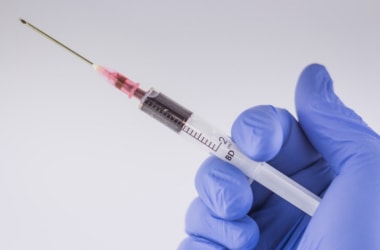 Scientists have developed the first rapid blood test that can diagnose tuberculosis and measure the severity of the deadly infection within a few hours. Scientists have developed the first rapid blood test that can diagnose tuberculosis and measure the severity of the deadly infection within a few hours.
This is an advance that may help combat the worldwide epidemic.
Despite USD 6.6 billion spent for international tuberculosis (TB) care and prevention efforts, TB remains a major risk to human health.
This is particularly for the developing world and people with HIV infections.
Making matters worse, TB bacteria can lurk dormant in a person's lung tissue, often for decades, before spontaneously producing full-blown TB disease that can then spread to others.
World Health Organisation (WHO) estimates that up to one-third of the world's population may have such dormant TB infections.
In the current front lines of TB testing, coughed-up sputum, blood culture tests, invasive lung and lymph biopsies, or spinal taps are the only way to diagnose TB.
The results can give false negatives, and these tests are further constrained because they can take days to weeks to get the results.
TB: Know More
- In 2016, an estimated 10 million people worldwide still develop TB each year according to the WHO's most recent report, resulting in almost two million deaths.
- TB remains a worldwide epidemic due to the lack of an effective TB vaccine, the rise in drug-resistant strains and the relatively poor performance of available TB diagnostics.
- The new blood-based TB test outperforms all others currently on the market and takes just hours to complete.
- This is critical since effective TB control requires that patients start treatment as soon as possible to reduce the risk of spreading TB.
- This test also holds promise for rapid assessment of TB treatment, an important factor in reducing the development and spread of drug-resistant TB strains, researchers said.
- Current TB assays often demonstrate reduced performance with HIV-positive TB patients or those with TB infections in non-lung tissues, and these patients can require tissue biopsies for diagnosis.
|
▼ Online Film Certification System of CBFC launched [03-29-17]
Online Film Certification System of CBFC would facilitate the PM's vision of Ease of Doing Business and Digital India.
The complete automation of the Film Certification Process would enable Good Governance making the entire process transparent and efficient.
The objective is to eliminate the need for human interface to the extent possible.
The new online certification system would be an important step in making the CBFC Office paper less and would enable effective monitoring & real time progress tracking for both CBFC Officials and the applicant (Producers).
More online initiatives would be introduced in the Ministry as part of the roadmap for transparent Governance.
The Film Facilitation Office (FFO) established by the Ministry in Nov 2015 provided Single window clearance to facilitate film shootings by foreign film makers in India.
A total of 41 shooting Permissions were given for foreign films/projects in 2016 which was approximately 33% increase over 2015.
Ministry of I&B has also simplified the Annual Renewal process for existing TV channels wherein permitted broadcasters can continue their operations by paying annual fee up to 60 days before the due date for continuation of the channel for a further period of 1 year.
The payment can now be made online through Bharat Kosh Portal since 1st January, 2017.
The online system has integrated the payments made by the producers towards certification fees with Bharatkosh portal, a Govt. of India system for all Non-tax revenue receipts.
It would be the First Software to fully integrate with the Bharatkosh.
Online Film Certification System: Know More (Source: PIB)
The salient features of the online film certification system are as follows: - In the e-cinepramaan, the status of each application would be visible online in the dashboard of the producer/concerned CBFC official.
- In case of short films/promos/trailers less than 10 minutes, even for Examination purposes also, the producer need not visit the Office/Theatre. They can merely submit their creations online.
- For films longer than 10 minutes, the applicant will only have to show the film at the Examining theatre and will not have to visit the CBFC Offices at all except to collect their certificates.
- The producer/applicant would be informed by SMS/e-mail of the status of their application and any action needed, beginning from the receipt of application to the certificate collection.
- The transparency in the system and elimination of middle men would mitigate chances of any corruption and would also avoid allegations of jumping the queue or rigging up of Examination committees.
- The implementation of QR code on the certificates would eliminate chances of fraudulent certificates.
- The system envisages a robust MIS system for performance tracking and efficient reporting.
- The system has inbuilt alerts depending on the pendency of the application to ensure that time limits prescribed by the Rules are not violated.
- Simultaneously, a new CBFC Website has also been developed bringing in new user friendly features and important information at the click of a button.
|
▼ NASA to launch balloon based observatory [03-27-17]
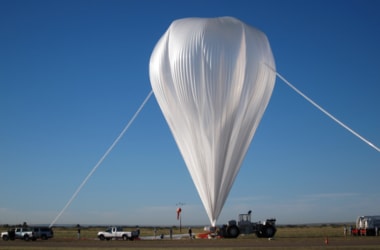 NASA is planning to launch a balloon-based observatory to measure emissions from the interstellar medium or the cosmic medium found between stars. NASA is planning to launch a balloon-based observatory to measure emissions from the interstellar medium or the cosmic medium found between stars.
This is known as Galactic/Extragalactic ULDB Spectroscopic Terahertz Observatory or GUSTO.
Data from this mission will help them to assess the life cycle of interstellar gas in the Milky Way galaxy.
The formation and destruction of star forming clouds needs to be analysed and the dynamics and gas flow in the vicinity of the galaxy's centre need to be understood.
Data will help scientists assess the same using an Ultralong-Duration Balloon (ULDB) carrying a telescope with carbon, oxygen and nitrogen emission line detectors.
The unique combination of data will provide the spectral and spatial resolution information required for researchers to focus on complexities of the interstellar medium and map large sections of plane of the Milky Way galaxy and the nearby Large Magellanic Cloud.
GUSTO will provide the first complete study of all phases of the stellar life cycle, from the formation of molecular clouds, through star birth and evolution, to the formation of gas clouds and the re-initiation of the cycle.
The mission is targeted for launch in 2021 from McMurdo, Antarctica, and is expected to stay in the air between 100 to 170 days, depending on weather conditions.
It will cost about USD 40 million, including the balloon launch funding and the cost of post-launch operations and data analysis
|
▼ Scientists prepare complex 3D map of stardust [03-27-17]
The 3D rendering of space dust has been carried out by scientists at Berkeley Lab.
Dust can dim or obscure the light of stars and galaxies beyond.
The project name is DESI or Dark Energy Spectroscopic Instrument.
This measures the universe's accelerating expansion rate after its launch in 2019.
DESI will create a map of more than 30 million distant galaxies, but the map will be distorted if the dust is ignored.
The project will map dust in three dimensions, to find out how much dust is in any 3D region in the sky and the Milky way galaxy.
The dust filled universe is part of the survey of the southern galactic plane, as dark patches.
Maps composed compare dust within one kiloparsec or 3262 light years in the outer milky way.
Data is used from Pan STARRS sky survey in Hawaii and from a separate survey called APOGEE at Apache Point, New Mexico.
A new technique has been used called infrared spectroscopy. This lets astronomers peer through dust.
Infrared measurements can cut through the dust that obscures different types of observations.
APOGEE and Research Findings: Know More - APOGEE focuses on light from 100,000 red giant stars across the Milky Way, including those in the central halo.
- 3D maps have a much greater resolution or ability to see details than previously existed.
- The results were found to be in conflict with models that expect dust in the Milky Way to be predictably distributed and to exhibit larger grain sizes in areas where most dust resides.
- Dust properties vary little with the amount of dust so existing models of dust in the Milky Way may need adjustment to account for a different chemical makeup.
- In denser regions, it was thought that the dust grains will collect, so you have more big grains and smaller grains.
- Dense dust clouds appear the same as concentrated dust clouds. Variations in dust properties are not a product of dust density.
- There is one third of the galaxy missing and scientists are working on missing third of the galaxy.
|
▼ Supercomputing facility for IIT-Kharagpur under NSM [03-23-17]
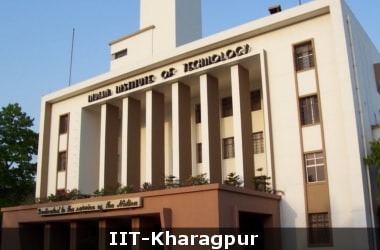 The Indian Institute of Technology, Kharagpur is the first academic institution to get supercomputing facility under the National Supercomputing Mission. The Indian Institute of Technology, Kharagpur is the first academic institution to get supercomputing facility under the National Supercomputing Mission.
This will provide large computational support to users to carry out both research and teaching activities that involve state-of-the-art High Performance Computing (HPC).
It will usher in a new age in research and innovation in the country.
The Peta-Flop new system with both CPU and CPU-GPU based servers along with the already existing HPC equipment will provide about 1.5 Peta-Flop capacity support to several areas where the researchers of IIT-KGP are actively involved.
The Institute is setting up a new Centre for Computational and Data Sciences (CCDS) around such a supercomputing platform to build, manage and operate the HPC facility.
The institution is engaged in research in several areas of national importance requiring large computational (both hardware and software) support.
"The facility will cover cutting-edge research scope in different inter-disciplinary areas like bio molecular simulations, drug design and bio-informatics.
Also on the anvil are climate change and digital earth, geo-scientific exploration, infrastructure design and sustainable cities.
CCDS will also focus on education and capacity building. IIT-KGP is the nodal centre for HPC-related educational activities by NSM.
NSM: Know More
- The objective of NSM is to achieve a self-reliant supercomputing platform in the country and to develop and expand the scope of using HPC systems to solve complex problems of national importance in different fields of science and technology.
- The initiative is supported by the Centre for Development of Advanced Computing (C-DAC) and the Indian Institute of Science (IISc).
- The mission envisages building supercomputing capacity and capability in the country.
- It has an estimated budget of INR 4,500 crore over a period of seven years.
|
▼ NASA's next-generation atomic clock debuts [03-23-17]
 In a key advance for safely navigating future human exploration of the solar system, NASA is set to send its next-generation atomic clock to space in late 2017. In a key advance for safely navigating future human exploration of the solar system, NASA is set to send its next-generation atomic clock to space in late 2017.
This clock will be smaller, lighter and magnitudes more precise than any atomic clock flown in space before.
Engineers at NASA's Jet Propulsion Laboratory in Pasadena, California have completed integration of the instrument, the Deep Space Atomic Clock, with the spacecraft that will take it into orbit later in 2017.
Timekeeping plays a critical role in spacecraft navigation and will be especially important for future deep space missions.
Most spacecraft are tracked using "two-way" methods -- the ground-based antenna 'pings' the spacecraft and waits for the signal to return.
By measuring how long the signal takes to travel, the distance to the spacecraft can be calculated.
A navigation team then processes this information to determine the spacecraft's flight path and also determine if any course corrections are required.
The next-generation atomic clock developed by NASA enables "one-way" tracking, where the spacecraft does not need to send the signal back to Earth.
The tracking measurements could be taken onboard and processed with a spacecraft-based navigation system to determine the path and whether any manoeuvre are needed to stay on course.
This will be a key advance for safely navigating future human exploration of the solar system by providing astronauts with their position and velocity when they need it.
It will lighten the load on the antennas in NASA's Deep Space Network, allowing more spacecraft to be tracked with a single antenna.
The Deep Space Atomic Clock would also improve the precision and quantity of the radio data used by scientists for determining a planet's gravity field and probing its atmosphere, NASA said
NASA: Know More
- Formed: July 29, 1958
- Preceding agency: NACA (1915–1958)[2]
- Jurisdiction: United States government
- Headquarters: Washington, D.C.
|
▼ World's third largest hypersonic wind tunnel [03-23-17]
 The Indian Space Research Organisation (ISRO) created history by commissioning the world’s third largest hypersonic wind tunnel at the Vikram Sarabhai Space Centre (VSSC) in Thiruvananthapuram. The Indian Space Research Organisation (ISRO) created history by commissioning the world’s third largest hypersonic wind tunnel at the Vikram Sarabhai Space Centre (VSSC) in Thiruvananthapuram.
A wind tunnel is used to study the effects of air flowing past a solid object - in ISRO’s case, space vehicles.
With the space agency lining up big missions like the ‘Reusable Launch Vehicle’ (RLV), ‘Two Stage to Orbit’ (TSTO) rockets, air breathing propulsion systems, and the human space flight programme for the future, the aero-thermodynamic modelling of these in a hypersonic environment is vital for optimal designs.
These facilities, indigenously designed, developed and ‘Made in India’ with the support of Indian industries, are the third largest in terms of size and simulation capability in the world.
A few critical technologies, which are under embargo, have been jointly developed by Isro and industries for realisation of these facilities.
There is no replacement for wind tunnel testing for aerodynamic characterisation.
|
▼ Meet the Moss Piglet, the world's toughest animal [03-22-17]
 They are considered the world's toughest animals, capable of living anywhere from the bottom of the ocean to 5,500 metres up a Himalayan mountain. They are considered the world's toughest animals, capable of living anywhere from the bottom of the ocean to 5,500 metres up a Himalayan mountain.
They can be boiled at temperatures of up to 150 degrees Celsius or frozen to near absolute zero, but still tardigrades, tiny, Muppet-like creatures also known as water bears or moss piglets, just will not die.
They have even been found on the outside of the International Space Station, where the lack of pressure would kill a human in minutes at most.
The big takeaway from the study is that tardigrades have evolved unique genes that allow them to survive drying out.
In addition, the proteins that these genes encode can be used to protect other biological material like bacteria, yeast, and certain enzymes - from desiccation.
These proteins have been named TDPs or 'tardigrade-specific intrinsically disordered proteins' in honour of the 1mm-long creatures who evolved to have them.
Previously it had been thought that a type of sugar called trehelose, which is found in other organisms including brine shrimp, was the secret behind the tardigrade's ability to return from the dead after being dried out for up to 10 years.
Following the discovery, reported in the journal Molecular Cell, the scientist put the genes into yeast and bacteria, which then gained the same properties as the tardigrades.
TDPs could be used to protect crops from drought and to preserve medicines without using a refrigerator.
Moss Piglet: Know More
- Kingdom: Animalia
- (unranked): Tactopoda
- Phylum: Tardigrades
- Classes: Eutardigrada, Heterotardigrada, Mesotardigrada
|
▼ Dubai Airports to house world's fastest free Wi-Fi services! [03-20-17]
 Dubai Airports has announced the world's fastest free Wi-Fi services across terminals to provide millions of passengers super fast internet access while flights are forthcoming. Dubai Airports has announced the world's fastest free Wi-Fi services across terminals to provide millions of passengers super fast internet access while flights are forthcoming.
Aptly titled WOW-Fi, the service offers a top speed of 100 megabits per second, about 10 times faster than what many internet users would achieve at home in the UAE.
The service provides internet connection surpassing all other airports, according to statements issued by the Dubai Airports.
The launch of the service follows Dubai Airport's launch of an upgraded free, unlimited high speed Wi-Fi connection across Dubai International and Dubai World Central in December 2016.
Unlimited free Wi-Fi at the DXB connects with a single click and offers fresh benchmarks for airports internationally.
For ensuring speed and reliability, Dubai Airports has invested in more than 6,000 new Wi-Fi access points to upgrade the entire wireless network infrastructure across airports.
As the biggest international airport in the world, Dubai Airport offers unlimited free Wi-Fi of the fastest speed across airports.
The service has been enjoyed by an average of 100,000 unique users per dy. This is called WOW-Fi experience and aims to impress 89 million passengers expected in 2017.
Dubai Airport: Know More
- Address: Dubai - United Arab Emirates
- Code: DXB
- Elevation: 19 m
|
▼ Scientists discover infrared ray Wi-Fi [03-20-17]
 Scientists have developed a new wireless internet based on harmless infrared rays. Scientists have developed a new wireless internet based on harmless infrared rays.
This is 100 times faster than existing wi-fi network and has the capacity to support more devices without getting congested.
Slow Wi-Fi is a source of irritation that nearly everyone experiences.
Wireless devices in the home consume ever more data, and it is only growing, and congesting the wi-fi network, researchers said.
The wireless network developed by researchers at Eindhoven University of Technology in The Netherlands not only has a huge capacity - more than 40 Gigabits per second (Gbit/s) - but also there is no need to share since every device gets its own ray of light.
The system is simple and cheap to set up.
The wireless data comes from a few central 'light antennas', for instance mounted on the ceiling, which are able to very precisely direct the rays of light supplied by an optical fibre.
The antennas contain a pair of gratings that radiate light rays of different wavelengths at different angles ('passive diffraction gratings').
Changing the light wavelengths also changes the direction of the ray of light. Since a safe infrared wavelength is used that does not reach the vulnerable retina in your eye, this technique is harmless.
As a user, if the smartphone or tablet moves out of the light antenna's line of sight, then another light antenna takes over.
The network tracks the precise location of every wireless device using its radio signal transmitted in the return direction, they said.
It is a simple matter to add devices: they are assigned different wavelengths by the same light antenna and so do not have to share capacity.
Moreover, there is no longer any interference from a neighbouring wi-fi network.
Current wi-fi uses radio signals with a frequency of 2.5 or five gigahertz.
The new system uses infrared light with wavelengths of 1,500 nanometres and higher.
This light has frequencies that are thousands of times higher, some 200 terahertz, which makes the data capacity of the light rays much larger.
Researchers managed to achieve a speed of 42.8 Gbit/s over a distance of 2.5 metres.
The system has so far used the light rays only to download; uploads are still done using radio signals since in most applications much less capacity is needed for uploading.
Gigahertz: Know More
- The gigahertz, abbreviated GHz, is a unit of alternating current (AC) or electromagnetic (EM) wave frequency equal to one thousand million hertz (1,000,000,000 Hz).
- The gigahertz is used as an indicator of the frequency of ultra-high-frequency (UHF) and microwave EM signals.
- It is also used, in some computers, to express microprocessor clock speed.
|
▼ North Korea tests new missile [03-20-17]
North Korea has conducted a ground test of a new type of high-thrust rocket engine that leader Kim Jong Un is a revolutionary breakthrough for the country's space programme.
Kim attended the test at Sohae launch site. The test was intended to confirm a new type engine thrust power and gauge the reliability of the control system and structural safety.
The test has great significance for the country's indigenous rocket industry.
The report indicated the engine is to be used for North Korea's space and satellite launching programme.
North Korea is banned from conducting long-range missile tests by the UN.
Under the 5 year plan, North Korea intends to launch more earth observation satellites in what would be the country's first geostationary communication's satellite.
North Korea is trying to create a viable space programme including a moon launch within the next ten years.
North Korea launched its latest satellite Kwangmyongsong 4, or Brilliant Star 4 into orbit on Feb 7, 2016 after conducting the first hydrogen-bomb test.
The first satellite in orbit was put in 2012.
|
▼ Chintu is the world's first robot to assist senior citizens [03-17-17]
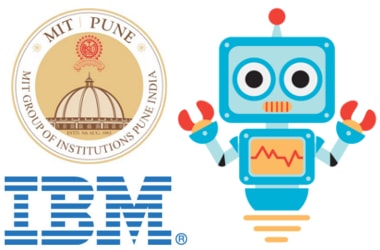 Maharashtra Institute of Technology-Pune and technology giant IBM have developed a robot Chintu. Maharashtra Institute of Technology-Pune and technology giant IBM have developed a robot Chintu.
This will assist senior citizens in everyday tasks.
Chintu is a 2 feet tall robot developed by MIT Pune in collaboration with IBM after an INR 10 lakh grant last year.
It is powered by the US-based company's cognitive assistant, IBM Watson.
Chintu can move his hands and read books to an audience.
Drawing from Watson's domain knowledge, Chintu will assist senior citizens in conducting everyday tasks such as reading the newspaper/book and generate reminders on their daily medication.
IBM: Know More
- Headquarters: Armonk, North Castle, New York, United States
- Founder: Charles Ranlett Flint
- Founded: 16 June 1911, New York City, New York, United States
- Revenue: 79.92 billion USD (2016)
- Number of employees: 386,558
|
▼ Banana research center established in Vaishali's Goraul [03-17-17]
 The Union government has established banana research centre at Goraul in Vaishali district of Bihar. The Union government has established banana research centre at Goraul in Vaishali district of Bihar.
It will function under Rajendra Prasad Central Agricultural University (RPCAU) at Pusa in Samastipur.
It is second such in the country after the National Research Centre for Banana at Tiruchirapalli in Tamil Nadu.
The centre will focus on the reasons for less production of banana and will work on expansion of its cultivation, plant protection, suitable utilisation of various parts of it such as pulp and fibre, marketing, processing, and value addition etc.
Maharashtra is the largest banana producing state in the country with productivity of 65.7 tonnes per hectare.
Overall the banana production in India stands at 142 lakh tonnes per year.
|
▼ Ammavin Aran: Women safety app in TN [03-15-17]
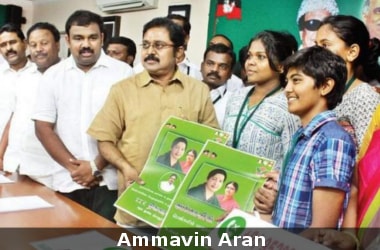 AIADMK IT Wing has launched the first-of-its-kind women safety application in Tamil Nadu. AIADMK IT Wing has launched the first-of-its-kind women safety application in Tamil Nadu.
The app is called 'Ammavin Aran' which stands for 'mother's fortress'.
The app will give the user details about the nearest police station and hospital along with map details and phone number.
There is an in-built whistle, which can manipulate the phone speaker to create a loud noise when pressed by anyone in distress.
Also, the app carries an in-built call recorder and and 'Tips' icon to provide life saving information.
The app was launched as a part of Women's Day celebration and is named after Jayalalalitha.
The women safety app was officially launched by the party's Deputy General Secretary TTV Dhinakaran.
AIADMK: Know More
- Leader: Jayalalithaa
- Founder: M. G. Ramachandran
- Founded: 17 October 1972
- Ideology: Populism, Social democracy
- Political position: Centrism
|
▼ Scientists discover new canyon system in AP [03-14-17]
Scientists for the first time discovered three new canyons close to Kovvada in Srikakulam district of AP.
This finding was made by team of scientists from CSIR-National Institute of Oceanography (NIO) in Visakhapatnam.
These three canyons together form a major canyon system in the depths of the Bay of Bengal.
This discovery was made by clearly mapping the ocean floor between Visakhapatnam and Srikakulam in Kovvada by sending over 32 high density beams to the depths of the sea.
Canyon systems are mostly formed by the flow of river water into the sea and they could be as old as the river system.
This is close to 23 million years.
The new canyon system was probably formed by river Kandivalasa.
It is very huge and its depth varies from about 90m at the starting point to about 2,500m at the deepest point.
It extends to about 50 to 70 km deep into the sea.
The last canyon systems off the Visakhapatnam coast were discovered in 1963 by American geologist E.C. LaFond of the US Navy Electronics Laboratory.
The data was collected on board research ship Anton Bruun.
Most of the canyons in the ocean system across the world act as channels for deposition of sediments from the river in the shelf region.
There are more cases of finding hydro-carbons if the deposits are more.
|
▼ Ostrich fossils 25,000 years old found [03-14-17]
Indian researchers have found molecular evidence confirming the presence of ostrich in India more than 25,000 years ago.
This evidence was unearthed during the DNA analysis of a fossilized eggshell fragment of ostrich.
Researchers found 92% genetic similarity between fossil eggshell samples and Struithio camelus, a species of ostrich found in Africa.
This is the first time that molecular evidence indicating the presence of ostrich in India was found in the eggshell fragments.
In total 11 fossilised eggshell samples from 8 archaeological sites in Rajasthan, Madhya Pradesh and Gujarat were studied.
The DNA was isolated from five samples and a tiny portion of a highly conserved mitochondrial region was enlarged and then sequenced from one of the samples.
The other four samples had less than 30 base pairs and so, were not included in the study.
This is the first time that a long-term DNA preservation in fossil eggshell collected from tropical environments has been studied in India.
|
▼ Chandrayaan-1 still orbits the moon! [03-14-17]
India's first lunar probe - the Chandrayaan - 1 spacecraft - which was considered lost is currently orbiting the moon, according to NASA scientists who used a new ground based radar technique.
ISRO lost communication with Chandrayaan-1 on Aug 29, 2009.
It was launched on Oct 22, 2008.
Scientists at NASA's Jet Propulsion Lab in CA located the spacecraft circling 200km above lunar surface.
NASA's Lunar Reconnaissance Orbiter (LRO) and the Indian Space Research Organisation's Chandrayaan-1 spacecraft in lunar orbit have been detected with ground-based radar.
The Chandrayaan-1 spacecraft is very small, a cube about 1.5 meters on each side - about half the size of a smart car.
Although the interplanetary radar has been used to observe small asteroids several million miles from Earth, researchers were not certain that an object of this smaller size as far away as the Moon could be detected, even with the world's most powerful radars.
Chandrayaan-1 proved the perfect target for demonstrating the capability of this technique.
The Moon is riddled with mascons (regions with higher-than-average gravitational pull) that can dramatically affect a spacecraft's orbit over time, and even cause it to have crashed into the Moon.
JPL's orbital calculations indicated that Chandrayaan-1 is still circling some 200 kilometres above the lunar surface, but it was generally considered lost.
|
▼ Mera Hunar HP: New mobile app and website for job seekers [03-14-17]
Himachal Pradesh Government launched mobile App and website Mera Hunar HP for job-seekers.
It is first of its kind app and website in the country.
Mera Hunar is a web based platform where the skilled, semi-skilled persons can apply for various jobs as per their requirement.
The platform is available both in English and Hindi.
It will directly connect the prospective employers with the job seekers.
This will benefit those looking for daily jobs within their area.
It will create self-employment as well as huge data-base of all the job seekers skilled in different trades.
Himachal Pradesh: Know More - Area: 55,673 km²
- Capital: Shimla
- Population: 6.856 million (2012)
- Chief minister: Virbhadra Singh
- Language: Hindi
|
▼ Iran tests Hormoz-2, new ballistic missile [03-10-17]
 Iran media reported the Revolutionary Guard has successfully tested ballistic missile Hormoz 2. The missile destroyed the target from 155 miles. Iran media reported the Revolutionary Guard has successfully tested ballistic missile Hormoz 2. The missile destroyed the target from 155 miles.
The sea launched ballistic missile was tested last week. President Trump has imposed sanctions on entities or individuals who support the ballistic missile program of Iran.
Several sophisticated rockets were also launched by Iran during military exercises in the central desert of the country in February.
Iran: Know More
- Capital: Tehran
- Code: +98
- Currency: Iranian rial
- President: Hassan Rouhani
- Supreme leader: Ali Khamenei
|
▼ China developing anti-aircraft weapon stealth drones [03-10-17]
China's largest missile maker is developing military drones with stealth abilities that can evade anti-aircraft weapons in another advance for the country's ambitious military modernisation programme.
Drones have become an indispensable weapon in modern warfare because they can play an important role in high-resolution reconnaissance, long-distance precision strikes.
They are also a critical part of anti-submarine operations and aerial combat.
This lends a new dimension to disputes in the South and East China Seas and over self-ruled Taiwan, claimed by China as a wayward province.
China has stepped up research into military drones.
Drones: Know More - An unmanned aerial vehicle (UAV), commonly known as a drone, unmanned aircraft system (UAS), or by several other names, is an aircraft without a human pilot aboard.
- The flight of UAVs may operate with various degrees of autonomy.
- This is either under remote control by a human operator, or fully or intermittently autonomously, by onboard computers.
- They originated mostly in military applications, although their use is expanding in commercial, scientific, recreational, agricultural.
- They are also used for other applications such as policing and surveillance, product deliveries, aerial photography, agriculture and drone racing.
- Civilian drones now vastly outnumber military drones, with estimates of over a million sold by 2015.
|
▼ Now, 3-D visuals of all Buddhist Circuit monuments in India! [03-10-17]
 The Union Science and Technology ministry is set to reproduce the monuments using three dimensional, cyber physical systems and other technologies with a view to virtually promote architectural heritage. The Union Science and Technology ministry is set to reproduce the monuments using three dimensional, cyber physical systems and other technologies with a view to virtually promote architectural heritage.
The project undertaken by Indian Institute of Technology (IIT) - Delhi about recreating architectural heritage recreated the lost city of Hampi, 3D printed it and also embed all the information related to the monuments, sculptures, their whole history in this physical model."
One could stop, pause and ask for more information about certain elements in-there and one would get that.
|
▼ Now, robots to ask questions too! [03-9-17]
 Scientists have created an algorithm that enables robots to ask intelligent questions when they are confused to help them get better at fetching objects. Scientists have created an algorithm that enables robots to ask intelligent questions when they are confused to help them get better at fetching objects.
This is an important task for future robot assistants.
The algorithm developed by researchers at Brown University in the US enables a robot to quantify how certain it is about what a user wants.
When its certainty is high, the robot will simply hand over the object as requested.
When it is not so certain, the robot makes its best guess about what the person wants, then asks for confirmation by hovering its gripper over the object and asking.
One of the important features of the system is that the robot does not ask questions with every interaction, it asks intelligently.
Supposing a user asks for a wrench and there are two wrenches on a table. If the user tells the robot that its first guess was wrong, the algorithm deduces that the other wrench must be the one that the user wants.
It will then hand that one over without asking another question. Those kinds of inferences, known as implicatures, make the algorithm more efficient.
|
▼ Now a brain-computer interface to read people's minds [03-9-17]
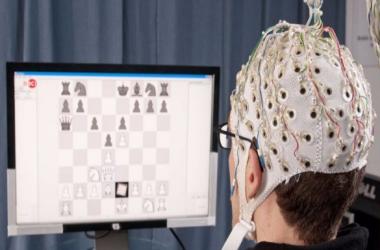 Scientists have come up with a new brain-computer interface reading people's thoughts in real time to correct robotic errors. Scientists have come up with a new brain-computer interface reading people's thoughts in real time to correct robotic errors.
This advance may lead to safer self driving cars. Existing brain-computer interfaces need people to train with it and even learn to modulate their thoughts to help the machine understand.
By relying on brain signals called "error-related potentials" (ErrPs) that occur automatically when humans make a mistake or spot someone else making one, the new approach allows even complete novices to control a robot with their minds.
This technology developed by researchers at the Boston University and the Massachusetts Institute of Technology (MIT).
It may offer intuitive and instantaneous ways of communicating with machines, for applications as diverse as supervising factory robots to controlling robotic prostheses.
Researchers collected electroencephalography (EEG) data from volunteers as those individuals watched a humanoid robot decide which of two objects to pick up.
This data was analysed using machine-learning algorithms that can detect ErrPs in just 10 to 30 milliseconds.
This means results could be fed back to the robot in real time, allowing it to correct its course midway.
|
▼ HDFC launches EVA, first AI chatbot for banking [03-8-17]
 HDFC Bank launched electronic virtual assistant (EVA), India’s first artificial intelligence-driven banking chatbot, for customer services. HDFC Bank launched electronic virtual assistant (EVA), India’s first artificial intelligence-driven banking chatbot, for customer services.
It can answer millions of customer queries across multiple channels instantly. It can assimilate knowledge from thousands of sources and provide answers in simple language in under 0.4 seconds.
Since its launch Eva has answered over 1 lakh queries from thousands of customers from 17 countries across the world.
The system becomes smarter as it learns through its customer interactions.
|
▼ Now, researchers store movies in DNA! [03-7-17]
 Researchers from Columbia University and the New York Genome Centre have stored a computer operating system, a short movie along with other data in DNA. Researchers from Columbia University and the New York Genome Centre have stored a computer operating system, a short movie along with other data in DNA.
Study showed an algorithm designed for streaming video on a cellphone could unlock DNA's nearly full storage potential by squeezing more information into its four base nucleotides.
DNA is an ideal storage medium because it is ultracompact and can last hundreds of thousands of years if kept in a cool, dry place, as demonstrated by the recent recovery of DNA from the bones of a 430,000-year-old human ancestor found in a cave in Spain.
DNA won't degrade over time like cassette tapes and CDs, and it won't become obsolete.
Researchers chose six files to encode, or write, into DNA:
- an operating system,
- an 1895 French film "Arrival of a train at La Ciotat",
- a US$50 Amazon gift card, a computer virus,
- a Pioneer plaque and
- a 1948 study by information theorist Claude Shannon.
They compressed the files into a master file, and then split the data into short strings of binary code made up of ones and zeros. Using an erasure-correcting algorithm called fountain codes, they randomly packaged the strings into so-called droplets, and mapped the ones and zeros in each droplet to the four nucleotide bases in DNA: A, G, C and T. The algorithm deleted letter combinations known to create errors and added a barcode to each droplet to help reassemble the files later. The researchers showed that their coding strategy packed 215 petabytes of data on a single gram of DNA, which was the highest-density data-storage device ever created.
|
▼ First ever across-the-river survey launched in Ganga [03-6-17]
 GoI has launched the first across the river survey in the Ganga river to assess the population of marine life, including the endangered Gangetic dolphin. GoI has launched the first across the river survey in the Ganga river to assess the population of marine life, including the endangered Gangetic dolphin.
Survey will create a baseline scientific data for governments to take up suitable measures to enhance the river water quality, according to the National Mission for Clean Ganga.
The first stretch of the survey was launched on March 1 from Narora in UP to Bijnor (covering around 165 km to establish the number of national marine animals).
The enumeration in the stretch from Allahabad to Varanasi is around 250 km in length.
Fish species composition in the 2525 km long river has been started from Harshil in Uttarakhand.
The authority is conducting the survey through Wildlife Institute of India, an autonomous institution of Environment and Forest Ministry, under Namami Gange Programme.
The disappearance of Gangetic dolphins, one of 4 freshwater dolphins in the world, stretches from Narora to Kanpur due to the pollution.
Study will locate stretches where dolphins are habitating, what conditions there are and levels of threat faced by the species in a particular belt.
Besides this, numerous dolphins, ghariyals and turtles in the river will also be ascertained after summer sets in completely as nesting takes place then and the counting will continue till October in 2017.
Besides populace count, the study will also assess the distribution pattern of aquatic life in the river, extent of threat level faced and habitat conditions.
Gangetic Dolphins: Know More
- The South Asian river dolphin is a freshwater or river dolphin found in India, Bangladesh, Nepal and Pakistan.
- It is split into two subspecies, the Ganges river dolphin and Indus river dolphin.
- Scientific name: Platanista gangetica
- Rank: Species
- Higher classification: Platanista
|
▼ First mobile congress in India at New Delhi [03-6-17]
 India will organise the first mobile congress in September with a special focus on reaching out to South East Asian markets. India will organise the first mobile congress in September with a special focus on reaching out to South East Asian markets.
There is a mobile world congress in Barcelona and an edition in Shanghai. India's emergence as a global leader will be showcased in the Indian Mobile Congress.
Department of Telecom and Ministry of Electronics and IT have emphasized on the Indian Mobile Congress. It is being launched by the Cellular Operators Association of India. GSM Association organises annual global event of Mobile World Congress associating with the three day event held in New Delhi on Sept 27.
All Indian mobile operators, Facebook, Huawei , Ericsson, Cisco etc are likely to participate in the mobile congress.
Event will focus on knowledge sharing, exhibitions, startups, skill development and pillars of Digital India, including Make in India.
|
▼ Scientists discover 3 new species of microbes on mobile handsets [03-6-17]
 Scientists have identified three new species of microbes that flourished on mobile handsets. Scientists have identified three new species of microbes that flourished on mobile handsets.
Reports from Western nations have suggested that mobile phones are more often harbouring deadly drug resistant bacteria.
The startling finding is by scientists of the government-owned National Centre for Cell Science (NCCS) here who have been able to identify three new species of microbes from screens of mobile phones.
Two bacteria and fungus, never before reported in scientific literature, were identified by this laboratory funded by the Department of Biotechnology.
Studies have also found mobile phones on an average housed some 10-12 different types of fungi and bacteria.
Mobile phones since they are carried in almost all human environments from the kitchen to the public transport harbour a larger diversity of microorganisms.
These microbes grow well on the sweat and grime left on the phones as humans carry them around.
In Pune, Yogesh S Shouche and his team from the Microbial Culture Collection group of the NCCS collected samples from 27 mobile phone screens and they were able to isolate 515 different bacterial types and 28 different fungi.
These microbes are friendly to humans and usually thrive on our bodies.
The team used sterilised cotton swabs and sterile saline solution to wipe from the surface these microbes which were then grown using standardised culture media at 30 degrees centigrade.
But what surprised this six-member team was that they encountered three new species of organisms.
These are two bacteria they have named Lysinbacillus telephonicus and Microbacterium telephonicum and a new species of fungi that they named Pyrenochaeta telephoni.
|
▼ Mouse embryo developed using STEM cells [03-6-17]
Understanding the very early stages of embryo development is of interest because this knowledge may help explain why a significant number of human pregnancies fail at this time.
Combining genetically-modified mouse ESCs and TSCs, together with a 3D scaffold known as an extracellular matrix, scientists were able to grow a structure capable of assembling itself and whose development and architecture very closely resembled the natural embryo.
Both the embryonic and extra-embryonic cells start to talk to each other and become organised into a structure that looks like and behaves like an embryo.
There was a remarkable degree of communication between the two types of stem cell: in a sense, the cells are telling each other where in the embryo to place themselves.
Interactions between the different types of stem cell are important for development, but the striking thing that new work illustrates is that this is a real partnership - these cells truly guide each other.
Comparing their artificial ‘embryo’ to a normally-developing embryo, the team was able to show that its development followed the same pattern of development.
The stem cells organise themselves, with ESCs at one end and TSCs at the other.
A cavity opens then up within each cluster before joining together, eventually to become the large, so-called pro-amniotic cavity in which the embryo will develop.
This is a technique that allows blastocysts to develop in vitro beyond the implantation stage, enabling researchers to analyse for the first time key stages of human embryo development up to 13 days after fertilisation.
This could overcome a shortage of embryos. Currently, embryos are developed from eggs donated through IVF clinics.
How Are Embryos Formed? - Once a mammalian egg has been fertilised by a sperm, it divides multiple times to generate a small, free-floating ball of stem cells.
- The particular stem cells that will eventually make the future body, the embryonic stem cells (ESCs) cluster together inside the embryo towards one end: this stage of development is known as the blastocyst.
- The other two types of stem cell in the blastocyst are the extra-embryonic trophoblast stem cells (TSCs), which will form the placenta, and primitive endoderm stem cells that will form the so-called yolk sac, ensuring that the foetus’s organs develop properly and providing essential nutrients.
- Previous attempts to grow embryo-like structures using only ESCs have had limited success. This is because early embryo development requires the different types of cell to coordinate closely with each other.
|
▼ A computer that grows as it computes! [03-3-17]
 Scientists have designed a new super quick form of magic computer comprising DNA molecules that grow as one computes and can outdo all standard systems in practical problem solving. Scientists have designed a new super quick form of magic computer comprising DNA molecules that grow as one computes and can outdo all standard systems in practical problem solving.
University of Manchester researchers have demonstrated the feasibility of engineering a universal turing machine that is programmed to compute anything any other device can process.
Electronic computers are a form of UTM. No quantum UTM has been built since.
Theoretical properties of computing machine including exponential boost in speed over electronic and quantum computers has been comprehended for many years, but breakthrough shows a UTM can only be created using DNA molecules.
A computer is searching a maze and comes to choice point. The electronic computer needs to choose which point that needs to be followed first. The magical property of growing as one computes is because the computer processors are made of DNA rather than silicon chips.
DNA molecules are small so a desktop computer could use more processors than all electronic computers in the world combined and outperform the world's current fastest supercomputer while consuming a fraction of its energy.
DNA: Know More
- Deoxyribonucleic acid is a molecule that carries the genetic instructions used in the growth, development, functioning and reproduction.
- It concerns all known living organisms and many viruses.
- DNA and RNA are nucleic acids.
- Alongside proteins, lipids and complex carbohydrates (polysaccharides), they are one of the four major types of macromolecules that are essential for all known forms of life.
- Most DNA molecules consist of two biopolymer strands coiled around each other to form a double helix.
|
▼ DRDO to produce high nitrogen steel [03-3-17]
 The Defence Research and Development Organisation (DRDO) has signed a technology transfer agreement with Jindal Stainless (Hisar) Ltd. (JSHL) for manufacturing high nitrogen steel (HNS). The Defence Research and Development Organisation (DRDO) has signed a technology transfer agreement with Jindal Stainless (Hisar) Ltd. (JSHL) for manufacturing high nitrogen steel (HNS).
The steel alloy has significant applications in the defence sector, but currently the country is mostly dependent on imports.
HNS has higher ballistic strength and is not only tough but also has good strength.
It is non-magnetic and corrosion-resistant.
It costs about 40% less than that of rolled homogenous armour steel (RHA).
Its domestic production will further the Indian Army’s quest for lighter armouring material.
HNS: Know More
- HNS is corrosion resistant and provides exceptional ballistic and blast protection than the existing material.
- This is at a much reduced thickness along with longevity which increases the fuel and mass efficiency.
- It exhibits higher energy absorption.
- Aim is to launch additional variants of HNS with enhanced blast and ballistic protection to cater to niche requirements of the defence sector.
- HNS passed ballistic tests in different calibers with 8-10 times higher impact and blast protection.
- It has potential application in all armoured vehicles, including infantry combat vehicle (ICV), light speciality vehicle (LSV), light armoured multi-purpose vehicle (LAMV), futuristic infantry combat vehicle (FICV), main battle tank (MBT), future ready combat vehicle (FRCV), aviation and naval systems.
|
▼ Low altitude interceptor missile launch successful [03-2-17]
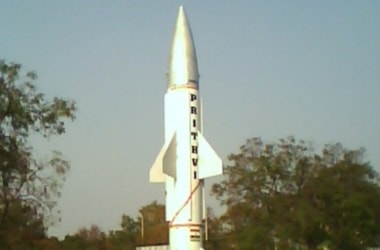 Moving towards operational two-tier ballistic missile defence (BMD) system, India on March 1, 2017 tested Prithvi interceptor missile. Moving towards operational two-tier ballistic missile defence (BMD) system, India on March 1, 2017 tested Prithvi interceptor missile.
This is a low-altitude interceptor missile, which was used to destroy an incoming ballistic missile over the Bay of Bengal.
DRDO on February 11 had tested a high-altitude interceptor missile+ as part of the experimental BMD system.
This is designed to track and destroy ballistic missiles both inside (endo) and outside (exo) the earth's atmosphere for a higher kill probability.
The previous involved the "exo-atmospheric" interceptor missile hitting the target at an altitude of 97-km, the test-firing on March 1 was against an incoming missile at 15-km altitude.
Defence officials said the interceptor missile fired from the Abdul Kalam Island (Wheeler Island) off Odisha coast successfully destroyed the incoming Prithvi missile, which was launched from the integrated test range at Chandipur, at 10.15 am.
All the mission objectives were successfully met.
The weapon system radars tracked the target and provided the initial guidance to the interceptor which could precisely home on to the target and destroyed it in the endo-atmospheric layer.
The complete event including the engagement and destruction was tracked by a number of electro-optical tracking systems using infrared imagery.
Radars and telemetry stations tracked the target and the interceptor till the destruction of the target.
The much-delayed BMD system will take at least another two years to become ready for deployment to protect a city or strategic installation.
It requires an overlapping network of early-warning and tracking sensors, reliable command and control posts, land and sea-based batteries of advanced interceptor missiles,
Development of this two-layered missile shield began in late-1990s, with the first interceptor missile being tested in 2006.
The system has been tested over 10 times till now, with at least three of the tests failing.
Moreover, it has not been tested so far in an integrated mode, with both exo and endo interceptor missiles together, which will be the real challenge.
Only the US, Russia, Israel and China have operational BMD systems as of now.
The ongoing testing of the Phase-I of the indigenous BMD system, with interceptors flying at 4.5 Mach high-supersonic speeds to intercept enemy missiles, is meant to tackle hostile missiles with a 2,000-km strike range.
The Phase-II, in turn, will be geared for taking on 5,000-km range missiles, with interceptors at hypersonic speeds of 6-7 Mach.
Prithvi: Know More
- Prithvi is a tactical surface-to-surface short-range ballistic missile.
- It is developed by DRDO of India under the Integrated Guided Missile Development Program.
- It is deployed by India's Strategic Forces Command
|
▼ Wipro's new IoT solution powers wind energy [03-1-17]
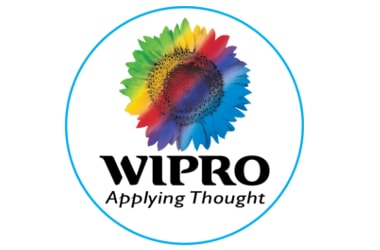 Software major Wipro on Tuesday offered a new IoT-based solution for wind parks and wind turbine manufacturers. Software major Wipro on Tuesday offered a new IoT-based solution for wind parks and wind turbine manufacturers.
This leverages the Hewlett Packard Enterprise (HPE) Windpark Manager 4.0.
The solution manages wind turbines and associated IT infrastructure, including IT applications and security aspects to optimise operational expenditure.
It will also generate new revenue streams and future-proof a customer's business.
This solution will deliver higher outputs of usable energy while making a positive environmental and societal impact.
Solution's robust scalable architecture reduces the operating cost of wind parks and boosts the efficiency of wind turbine operations.
It also provides a real-time, executive dashboard that displays key business and IT-related information on wind park operations.
The Windpark Manager 4.0 provides a unique application of HPE Operations Bridge software capabilities through the simplification and automation of IT operations.
It also offers real-time visibility to help executives make decisions faster.
Wipro: Know More
- CEO: Abidali Neemuchwala (since 1 Feb 2016)
- Founder: M.H. Hasham Premji
- Headquarters: Bengaluru
- Revenue: 7.735 billion USD (2016)
|
▼ WHO's 12 priority pathogens [03-1-17]
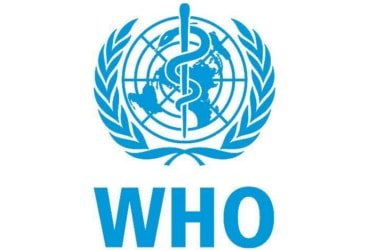 WHO on 28th Feb 2017 published its first ever list of antibiotic-resistant "priority pathogens" - a catalogue of 12 families of bacteria that pose the greatest threat to human health. WHO on 28th Feb 2017 published its first ever list of antibiotic-resistant "priority pathogens" - a catalogue of 12 families of bacteria that pose the greatest threat to human health.
The list was drawn up in a bid to guide and promote research and development (R&D) of new antibiotics.
This is as part of WHO’s efforts to address growing global resistance to antimicrobial medicines.
The list highlights in particular the threat of gram-negative bacteria that are resistant to multiple antibiotics.
These bacteria have built-in abilities to find new ways to resist treatment and can pass along genetic material that allows other bacteria to become drug-resistant as well.
The WHO list is divided into three categories according to the urgency of need for new antibiotics: critical, high and medium priority.
| Priority 1: | CRITICAL | | Acinetobacter baumannii, carbapenem-resistant | | Pseudomonas aeruginosa, carbapenem-resistant | | Enterobacteriaceae, carbapenem-resistant, ESBL-producing | | Priority 2: | HIGH | | Enterococcus faecium, vancomycin-resistant | | Staphylococcus aureus, methicillin-resistant, vancomycin-intermediate and resistant | | Helicobacter pylori, clarithromycin-resistant | | Campylobacter spp., fluoroquinolone-resistant | | Salmonellae, fluoroquinolone-resistant | | Neisseria gonorrhoeae, cephalosporin-resistant, fluoroquinolone-resistant | | Priority 3: | MEDIUM | | Haemophilus influenzae, ampicillin-resistant | | Streptococcus pneumoniae, penicillin-non-susceptible | | Shigella spp., fluoroquinolone-resistant |
|
▼ Stanford researchers develop FSP to measure manmade quakes [03-1-17]
 Stanford scientists have developed a new software tool. This will enable energy companies to calculate the possibility of triggering manmade earthquakes from activities associated with oil and gas production. Stanford scientists have developed a new software tool. This will enable energy companies to calculate the possibility of triggering manmade earthquakes from activities associated with oil and gas production.
Oil and gas operations can generate significant quantities of produced water–brackish water that needs to be disposed of through deep injection to protect drinking water.
Energy companies also dispose of water that flows back after hydraulic fracturing in the same way.
This process can increase pore pressure–the pressure of groundwater trapped within the tiny spaces inside rocks in the subsurface.
This, in turn, increases the pressure on nearby faults, causing them to slip and release seismic energy in the form of earthquakes.
Identifying which faults are likely to be problematic, the newly developed Fault Slip Potential (FSP) tool uses three key pieces of information to help determine the probability of a fault being pushed to slip.
The first is how much wastewater injection will increase pore pressure at a site. The second is knowledge of the stresses acting in the earth.
This information is obtained from monitoring earthquakes or already drilled wells in the area. The final piece of information is knowledge of pre-existing faults in the area.
Such information typically comes from data collected by oil and gas companies as they explore for new resources.
Researchers have started testing their FSP tool in Oklahoma, which has experienced a sharp rise in the number of earthquakes since 2009, due largely to wastewater injection operations.
|
▼ Second largest Mayan jade pendant found [03-1-17]
A group of scientists unearthed a large piece of carved mayan jade pendant inscribed with a historical text describing its first owner.
The pendant once belonged to an ancient Maya king.
The T-shaped pendant is remarkable for being the second largest Mayan jade found in Belize to date.
The mayan jade pendant measures 7.4 inches in width, 4.1 inches in height and 0.3 inches in thickness.
The pendant is the only one known to be inscribed with a historical text. On the back of the pendant, 30 hieroglyphs about its first owner are carved.
The front of the pendant is carved with a T. It is the Mayan glyph “ik” which stands for “wind and breath.”The pendant was buried in a T-shaped platform.
A vessel with a beaked face, probably a Maya god of wind, was also unearthed with the pendant. Researchers estimated that the pendant was buried as a dedication to the wind god.
Mayan Civilization: Know More - The Maya civilization was a Mesoamerican civilization developed by the Maya people.
- The civilization is noted for its hieroglyphic script, which is the only discovered fully developed writing system of the pre-Columbian Americas.
- The civilization is also noted for its art, architecture, mathematics, calendar and astronomical system. The Maya civilization grew in an area that covers southeastern Mexico, all of Guatemala and Belize, and the western portions of Honduras and El Salvador.
- The Preclassic period (2000 BC to 250 AD) saw the beginning of the first complex societies in the Maya region.
- The first Maya cities developed around 750 BC. These cities possessed extensive architecture by 500 BC.
|
| Chronology of events |
|
Airbus, Boeing in talks for 3D-printed aircraft parts: South African researchers developing the world's largest machine for producing aircraft parts using lasers to melt powdered titanium are in talks with Airbus and Boeing.
|
|
Now, in a first, researchers at the University of Minnesota have discovered a way to thaw animal heart valves and blood vessels using a process called “nanowarming”; this could pave the way for advanced organ banks.
|
|
Defence Research and Development Organisation (DRDO) handed over three of its products for induction into the Indian Army in a formal function here namely (i) Weapon Locating Radar (WLR), SWATHI, (ii) NBC Recce vehicle and (iii) NBC Drugs.
|
|
Dismissing reports of misuse of biometrics data, the government today said Aadhaar-based authentication is "fully safe and secure”.
|
|
Social media giant Facebook has launched its much hyped “fake news“ crackdown initiative in the US, tagging as “disputed“ the stories that are deemed false by fact checking organisations. The new feature uses non-partisan third-party organisations like Snopes and Politifact to assess the factual accuracy of stories reported as fake by users.
|
|
Humanity may soon generate more data than hard drives or magnetic tape can handle, a problem that has scientists turning to nature's age-old solution for information-storage -DNA.
|
|
NASA is sending a self-sufficient plant growth system to the International Space Station (ISS) that will help astronauts grow their own food during deep-space exploration missions. The new plant system will this month join "Veggie" -Nasa's first fresh food growth system already active on ISS.
|
|
The Hubble Space Telescope (HST) has captured an image of an incredibly massive galaxy dubbed as UGC 12591 that is 400 million light years away from the Earth. It is situated in the westernmost region of the Pisces-Perseus Supercluster, one of the largest known structures in the cosmos.
|
|
The European Union (EU) on 7 March 2017 launched the fifth satellite of the Copernicus observation program from Europe’s spaceport in French Guiana. The Sentinel-2B satellite is a part of Sentinel Earth observation satellites.
|
|
For the first time in more than 6 years, both chambers of US Congress passed a bill that approves funding for NASA and lays out new mandates for the space agency. The NASA Transition Authorisation Act of 2017 , which appropriates $19.508 billion to the agency, is a version of a nearly identical bill that the Senate and House had previously collaborated on for months.
|
|
China is developing a manned submersible capable of reaching the deepest known points in the world’s oceans in search of precious metals. The 11,000-metre deep-sea submersible is planned to conduct its first ocean test in 2021.
|
|
IBM scientists have built what they say is the world’s smallest ever magnet, which uses a single atom to store information. Their proof of concept could one day lead to credit card-sized hard drives capable of holding the entire 35 million song iTunes library.
|
|
India has successfully tested an extended range BrahMos supersonic cruise missile whose reach has been increased from 290 km to 400 km, from a test range along the Odisha coast.
|
|
Pakistan Navy successful tested new land-based anti-ship missile from the coastal region. During the test, missile secured a hit on a target placed at sea.
|
|
Britain’s fertility regulator has granted first licence to doctors in Newcastle, northern England to create babies using a three-parent IVF technique designed to prevent inherited genetic diseases.
|
|
The Ministry of AYUSH, under its Extra Mural Research Scheme, has approved a project, namely “Potential anti-oxidant effect of selected Ayurvedic herbs in Parkinson and Alzheimer disease”. This project has been undertaken by All India Institute of Medical Sciences, New Delhi.
|
|
To address the issue of cyber resilience, RBI vide circular dated December 9, 2016 had instructed all authorised entities / banks issuing PPIs in the country to carry out a special audit by the empanelled auditors of Indian Computer Emergency Response Team (CERT-In) on a priority basis and take immediate steps thereafter to comply with the findings of the audit report.
|
|
Arunachal boy Anang Tadar invents ‘Goggles For Blind’ to locate objects
|
|
Amitabh Bachchan launched the World’s first mobile App on ‘ABC of Breast Health’ at an event organised by the Ushalakshmi Breast Cancer Foundation at Mumbai.
|
|
All existing subscribers of mobile services will have to go for Aadhaar-based re-verification soon, with the government instructing telecom operators to initiate the process.
|
|
Dubai to introduce robots in government services. A new Artificial Intelligence (AI) smart lab will soon begin training government officials to implement AI in a wide variety of tasks that will make lives easiee.
|
|
The Government intends to set up the India-based Neutrino Observatory (INO) in West Bodi Hills, Theni District of Tamil Nadu. The project is awaiting a clearance from the Tamil Nadu Pollution Control Board. The project is held up because of the long overdue Tamil Nadu Pollution Control Board (TNPCB) clearance.
|
|
ISRO and Jet Propulsion Laboratory (JPL)/ NASA are jointly working on the development of Dual Frequency (L & S band) Synthetic Aperture Radar Imaging Satellite named as NASA-ISRO Synthetic Aperture Radar (NISAR).
|
|
Saturn’s largest moon, Titan, might actually be the weirdest moon in the solar system. In addition to literal seas of methane, scientists are now reporting that Titan is full of electric sand.
|
|
Refrigerator-size dinosaur footprints are just some of the trackways that make the western coast of Australia the most diverse place on Earth for dinosaur footprints, a new study finds.
|
|
Expedition 50 Flight Engineer and astronaut Peggy Whitson is all set to break the spacewalk record after she heads for her eighth sojourn; Whitson, will thereby surpass astronaut Sunita Williams' record for most spacewalks by a female spacewoman.
|
|
The Indian Space Research Organisation (ISRO) has developed four types of lithium ion batteries for satellite and launch vehicle applications. These four types of batteries are 1.5Ah, 5Ah, 50Ah and 100Ah.
|